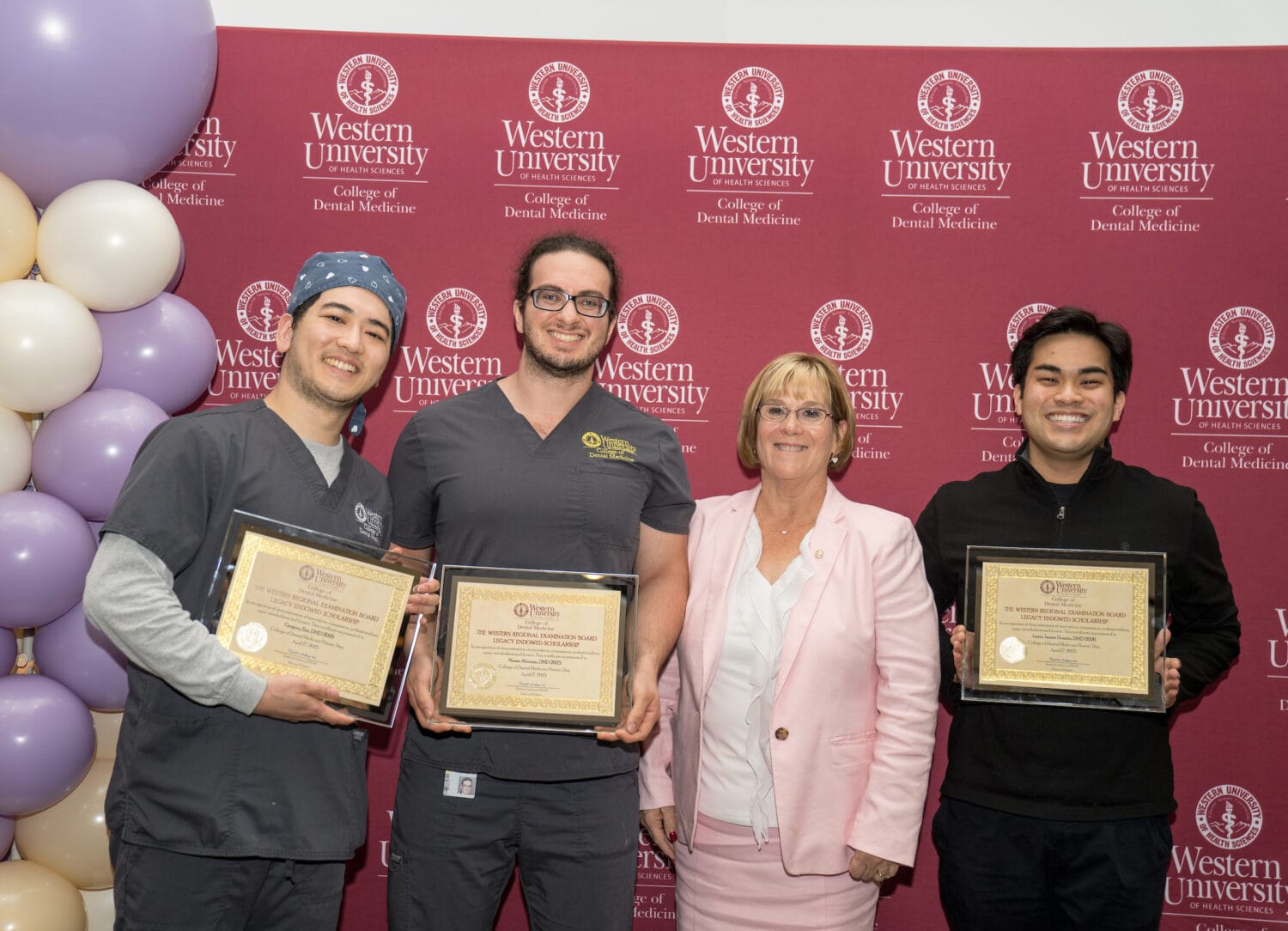WesternU College of Veterinary Medicine students learn about One Health opportunities in Mongolia

To kick off One Health Awareness Month, Western University of Health Sciences’ College of Veterinary Medicine held a presentation about collaborative efforts in Mongolia to address disease surveillance and prevention.
Andrea Goodnight, DVM, Head Veterinarian at The Living Desert Zoo and Gardens in Palm Springs, California, talked about her One Health efforts in Mongolia in collaboration with Gana Wingard, Curator of Conservation in Mongolia, on Jan. 23, 2024 on WesternU’s Pomona, California campus.
Goodnight visited Mongolia in September 2023 and is developing a One Health project focused on the intersection of domestic and wild animals in and around the Ikh Nart Nature Reserve on the northern edge of the Gobi Desert.
The nature reserve protects a hotspot of biodiversity, several globally important species, and pasture for 150 nomadic herding families, said CVM Director of Clinical Relations Curtis Eng, DVM.
“We aim to understand the prevalence of transmissible diseases between livestock and wildlife and mitigate transmission at the Ikh Nart Nature Reserve,” Eng said. “This includes determining zoonotic pathogens and other wildlife disease surveillance, working with local herders to improve livestock husbandry and health practices, and working with the herders to implement actions that prevent the spread of transmissible disease.”
Mongolia still has nomadic herders keeping the pastoral population and culture alive, Goodnight said. Their livestock have adapted to various biomes and landscapes.
Herders live in a ger (or yurt from the Turkish language), a portable tent that they can set up within about 20 minutes. They cook, eat, sleep and socialize in them, and they typically move multiple times per year to find better grass and other resources. The livestock are free to roam, which provides many chances for wild and domestic animals to mix and potentially transmit diseases, Goodnight said.
Mongolia has 80 million livestock, including sheep goats, cattle, and horses. The country has a population of 3.5 million people and 4.8 million horses, so it has a big horse culture. Many learn to ride when they’re 3 years old, and they begin racing horses at age 5.
The Ikh Nart Nature Reserve was established in 1996 and it encompasses 160,000 acres. Conservation challenges include illegal mines, poaching, overgrazing and fewer rains, Goodnight said.
“It’s a very unique place and a really amazing model because it doesn’t just focus on the biology of one species, but through the multiple species interactions it’s really a One Health program,” Goodnight said. “So all of these specific animals are studied to understand their biology and ecology and how they’re using the land. But in addition, some of the other parts of it is looking at the whole environment. So we have restoration ecologists working on trying to help restore the landscape, both for the animals and also for the people who live nearby. And then a huge part is capacity building, community engagement and education for the local people, but also for the school groups.”
For example, marmots are a keystone species because people have poached them almost to extinction. So coming back and restoring the marmot population has been really key as well, Goodnight said Local veterinary and biology students participated in the tagging of Cooper’s hawk chicks and pit vipers so they can better define land usage.
During her 2023 visit, Goodnight provided animal health assessments. In one photo, they captured a goitered gazelle and conducted a physical exam, drew blood for disease testing and administered antioxidants.
“We want to look at this competition between livestock and ungulates and so far we have a few years’ worth of disease information that we’re just starting to look at and to analyze,” Goodnight said. “We have a GIS (geographic information system) specialist trying to GIS map the data so we can see where these diseases are going and how they’re moving.”
Mongolia does not have a lot of health care for dogs, so one potential project is to conduct parasite testing on herders’ dogs and educate the herders about the importance of vaccinating their dogs for rabies.
Ikh Nart has 550 cinereous vulture nests, and scientists have been conducting health assessments and tagging of vulture chicks. Adults come back year after year to the same nest and they just build them bigger and bigger. Goodnight said there are efforts to develop capture techniques for adults.
“(The cinereous vultures) leave Mongolia when they are chicks, and many fly to South Korea,” Goodnight said. “Then as adults they come back to Mongolia (seven or eight years later), so it would be very interesting to start more longitudinal health surveys of these animals as they come back.”



